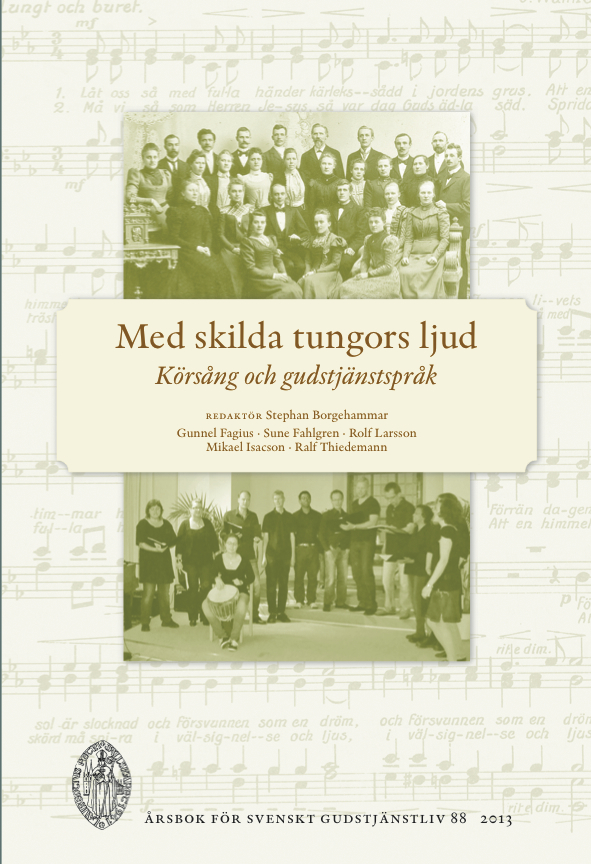”Rena, o Gud, våra hjärtan och samveten ...” Om en böns nyfödelse och nytolkning i Svenska kyrkan
Abstract
”Cleanse, o God, our hearts and consciences ...” On the rebirth and reinterpretation of a prayer in the Church of Sweden
The prayer “Rena, o Gud, våra hjärtan och samveten” (”Cleanse, o God, our hearts and consciences”) is well known in many parts of the Church of Sweden. Even though it has never been included in any official service book, it has been used by many priests as an introductory prayer in the mass, just after “In the name of the Father [...]” but before the priest’s penitential address to prepare the congregation for their general confession.
In this article, the prayer’s history during the twentieth and twenty-first centuries in the Church of Sweden is outlined. It was published in 1926 by Arthur Adell (1894–1962) and Knut Peters (1896–1950) in En liten bönbok (A Small Prayer Book), a book of prayers for the priest to say before, during and after mass. Probably, they found the prayer in Litvrgia Svecanæ ecclesiae catholicæ & orthodoxæ conformis, also called Röda boken (The Red Book), published in the sixteenth century. Thereafter, it has been published – with different textual variants – in Den svenska tidegärden (The Swedish Divine Office), in unofficial missals published by the High Church movement, but also, in the year 2000, in a Service Book Proposal (that was never accepted by the General Synod). The widespread use of the prayer indicates that priests even nowadays learn liturgy primarily by “oral tradition”, i.e. through their own experience from the pew, and not from the written service books.
In Röda boken, the prayer is a translation of the Latin prayer Conscientias nostras that can be traced back at least to the eighth century and has been used primarily as a prayer during Advent but also, e.g., as a preparatory prayer for the mass. The meaning of the prayer is discussed in the article on the basis of different textual variants in Latin and Swedish as well as different liturgical usages (e.g., Advent prayer, preparatory prayer before mass, introductory prayer before the general confession within the mass).Downloads
Published
Issue
Section
License
© the authors, Laurentius Petri Sällskapet för Svenskt Gudstjänstliv and Artos & Norma Bokförlag. Copying and using material from Svenskt Gudstjänstliv for scholarly purposes is permitted as long as the source is indicated. For other uses, please contact the respective author as well as the publisher. Special restrictions may apply to images.


